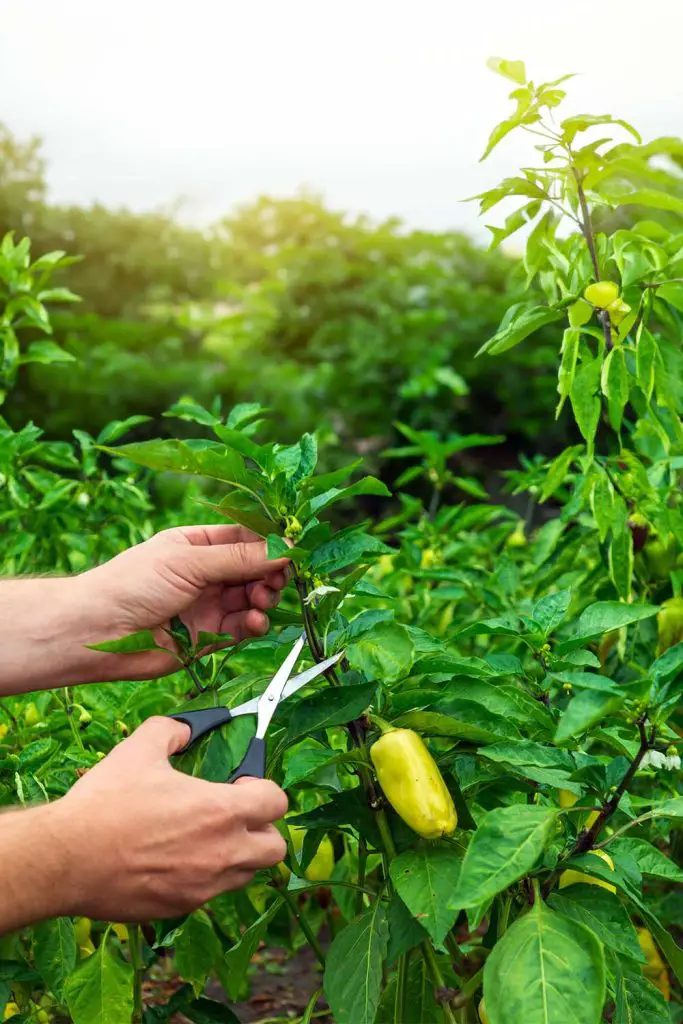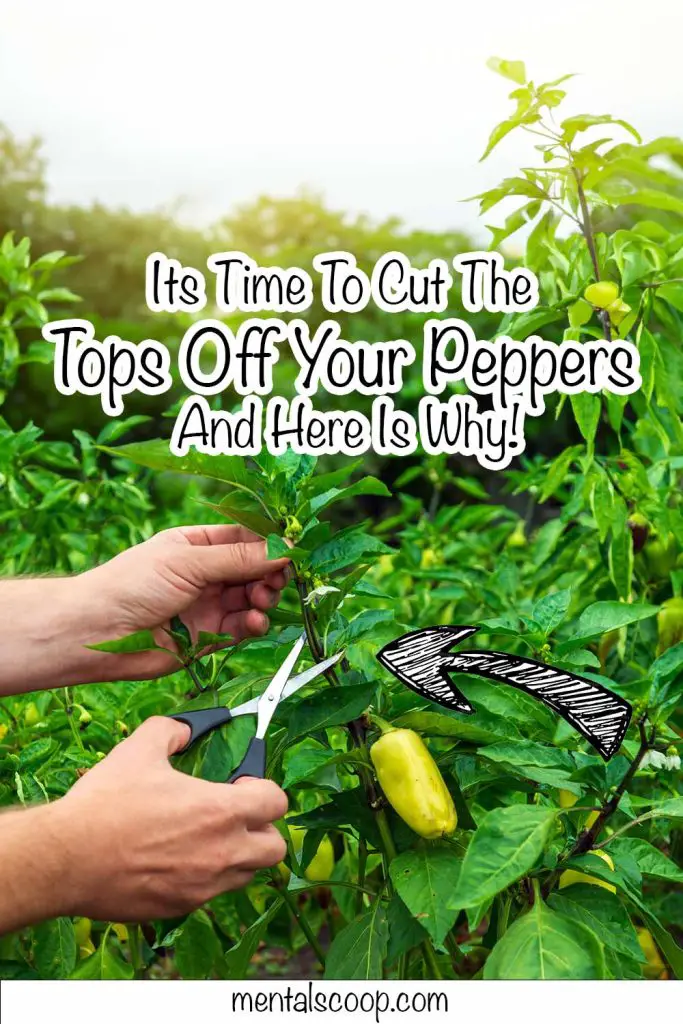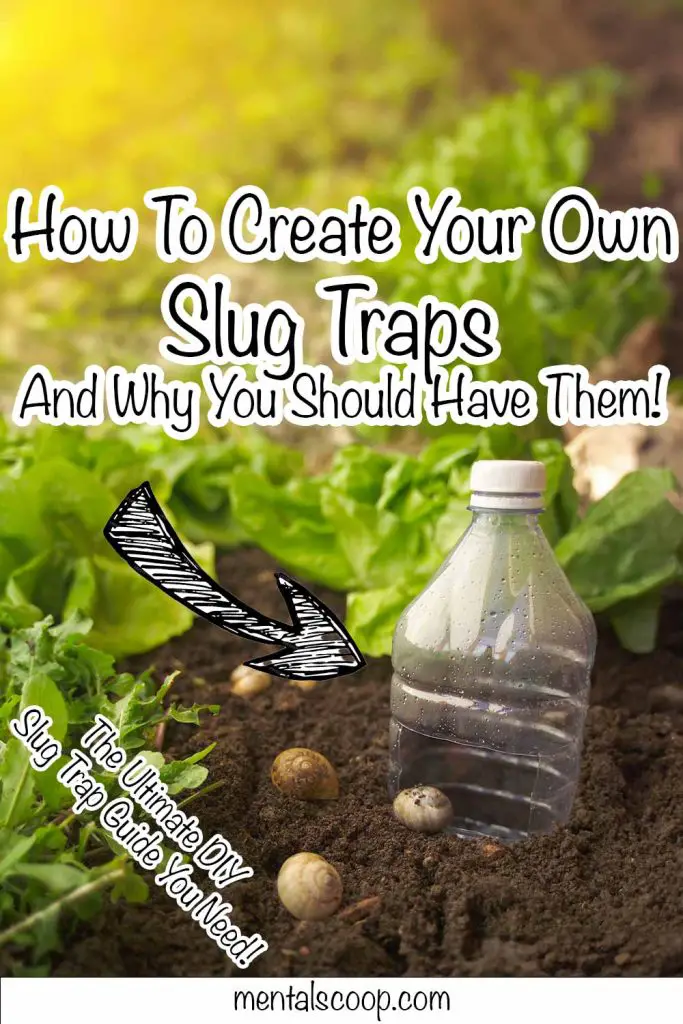Its Time To Cut The Tops Off Your Peppers And Here Is Why!

Growing your own peppers can be a rewarding experience. They add a splash of color to your garden, a zing of flavor to your meals, and a sense of accomplishment to your gardening skills. But, did you know that there’s a little secret to growing even better peppers?
Yes, it’s all about cutting the tops off your pepper plants. It may sound counterintuitive, but this technique can lead to healthier plants and more abundant yields. Let’s delve into the details of why you should start topping your peppers today.
Encouraging Bushier Growth
When you cut the tops off your pepper plants, you are encouraging them to grow more laterally rather than vertically. This process, known as “topping,” promotes the development of side branches.
These side branches result in a bushier plant that can support more fruit. A bushier plant also has more leaves, which can capture more sunlight and convert it into energy, fueling even more growth.
Boosting Fruit Production
One of the main reasons gardeners top their pepper plants is to increase fruit production. By redirecting the plant’s energy from growing tall to growing wide, you can stimulate the growth of more flower buds. More flowers mean more peppers.
This technique can be especially beneficial for varieties of peppers that are naturally inclined to grow tall and leggy.
Strengthening Plant Structure
A taller plant is more likely to be damaged by wind or heavy rains. Topping your peppers helps them develop a stronger, sturdier structure that can withstand adverse weather conditions.
This not only protects your plants but also ensures that the developing fruits are less likely to be damaged or dropped prematurely.
Improving Air Circulation
Bushier plants with more lateral growth have better air circulation compared to tall, lanky plants. Good air circulation is crucial in preventing fungal diseases, which thrive in damp, stagnant conditions.
By topping your pepper plants, you reduce the risk of diseases such as powdery mildew and root rot, leading to healthier plants overall.
Enhancing Sunlight Exposure
Peppers need plenty of sunlight to thrive. Topping your plants ensures that sunlight reaches all parts of the plant, not just the top. With more even sunlight exposure, the leaves can photosynthesize more efficiently, boosting the plant’s overall health and productivity.
This technique can be particularly useful in gardens where space is limited and plants are grown close together.
Controlling Plant Height
In small gardens or container setups, controlling the height of your plants is crucial. Topping peppers can keep them at a manageable height, making them easier to care for and harvest.
This is particularly important if you are growing multiple types of plants in close proximity, as it prevents taller plants from overshadowing shorter ones.
Timing and Technique
The best time to top your pepper plants is when they are young, usually when they have developed 4-6 true leaves. To top the plant, simply snip off the top part of the stem above a set of leaves.
This cut will encourage the plant to develop multiple stems, leading to a bushier growth pattern. Always use clean, sharp scissors or pruning shears to make the cut to avoid damaging the plant.
Aftercare for Topped Plants
After topping your peppers, it’s important to provide them with proper care to ensure they recover and thrive. Make sure they receive adequate water and nutrients, especially during the initial recovery period.
Mulching around the base of the plants can help retain moisture and keep the roots cool. Regularly check for pests and diseases, and address any issues promptly to keep your plants healthy.
Experiment and Observe
Gardening is as much about experimentation as it is about following rules. Try topping some of your pepper plants while leaving others untouched. Observe the differences in growth patterns, health, and fruit production.
This hands-on experimentation can provide valuable insights into how your specific pepper varieties respond to topping and help you refine your gardening techniques.
Topping your pepper plants is a simple yet effective technique to boost their health and productivity.
By encouraging bushier growth, increasing fruit production, strengthening plant structure, improving air circulation, enhancing sunlight exposure, and controlling plant height, you can enjoy a bountiful harvest of peppers.
So, grab your scissors and give it a try. Your garden—and your taste buds—will thank you!

More interesting articles you may be interested in reading:

